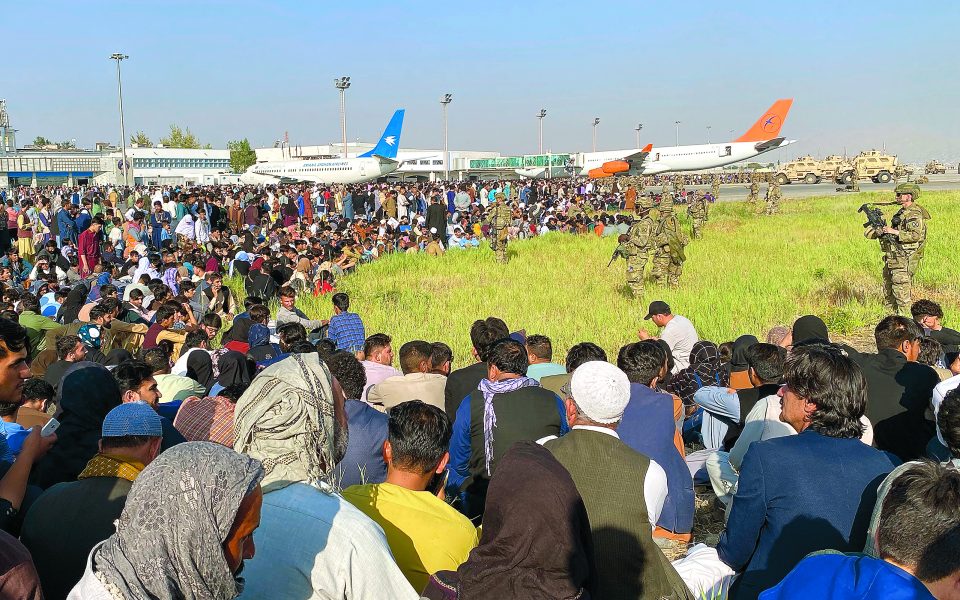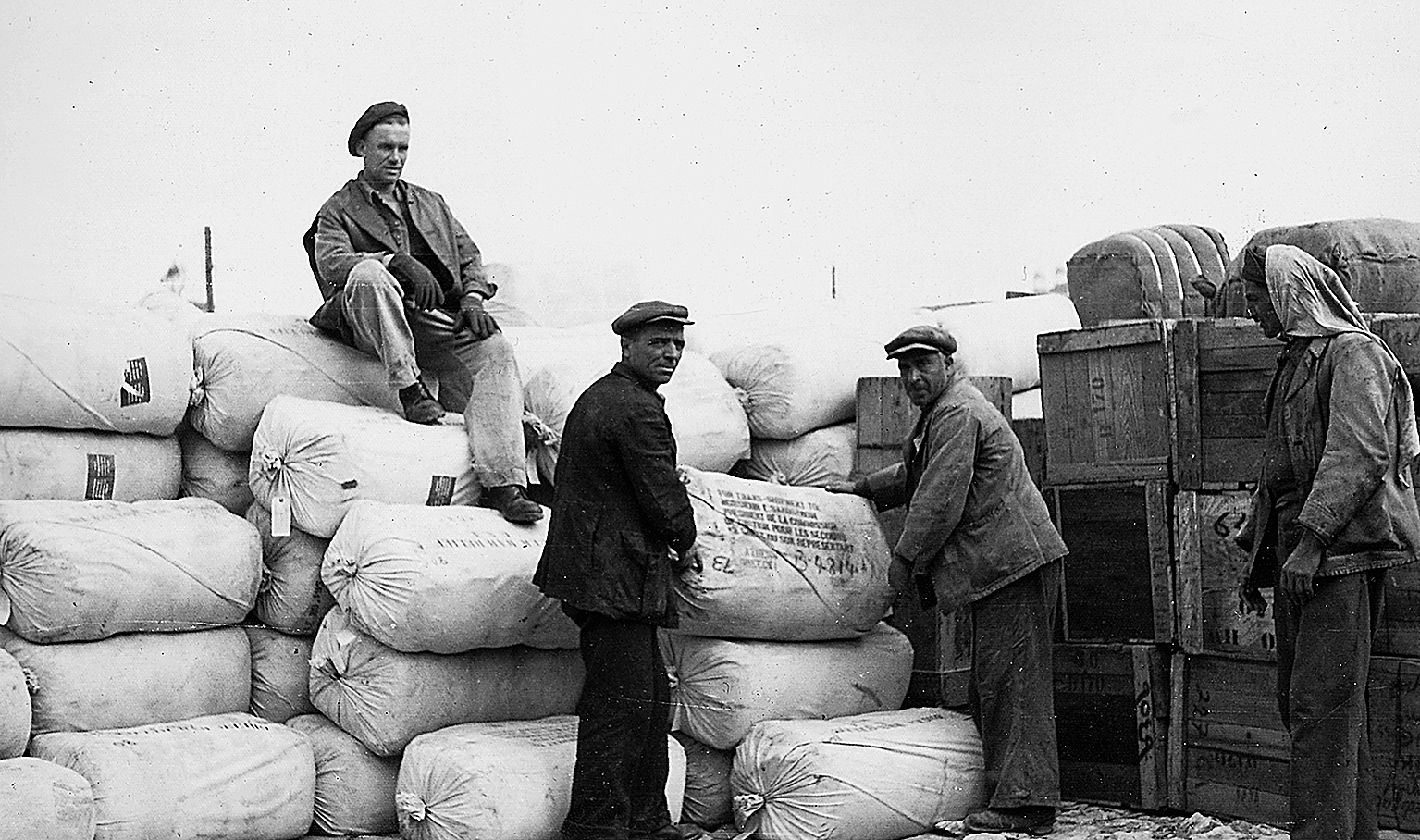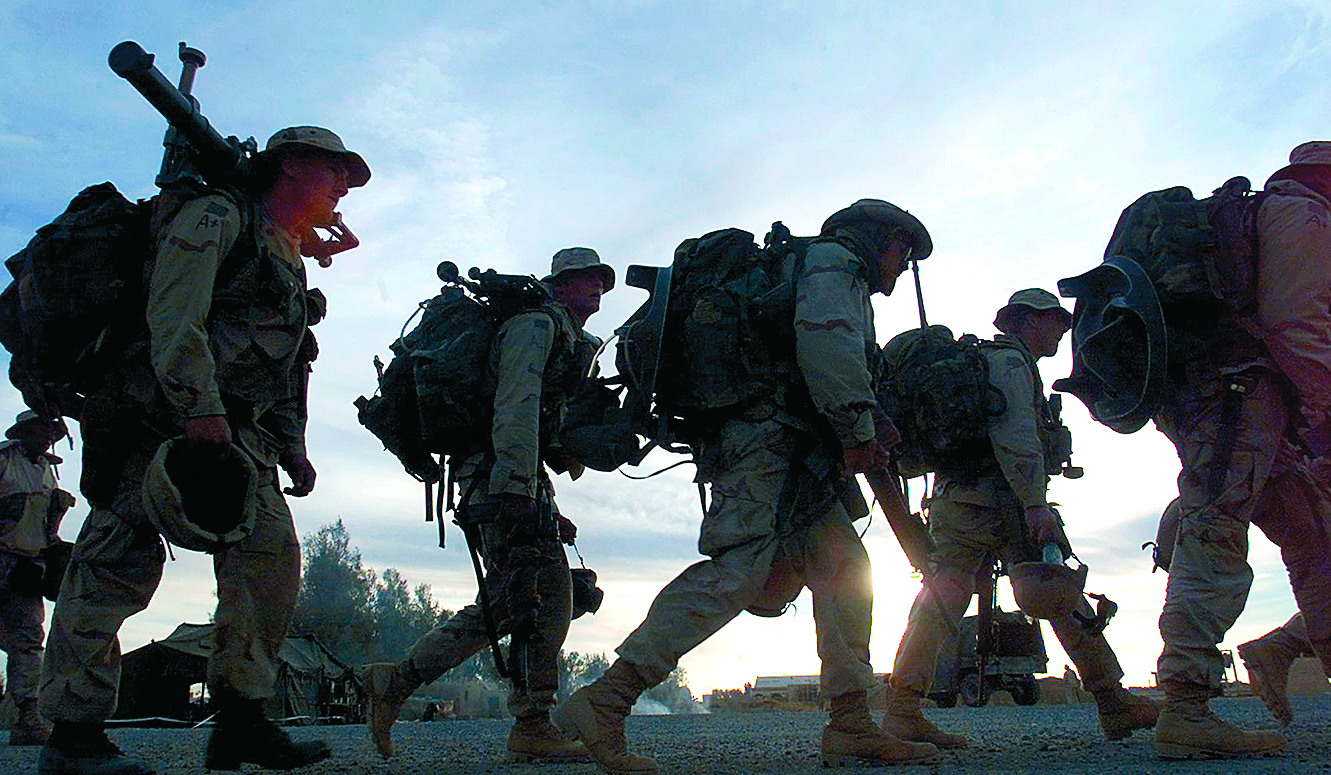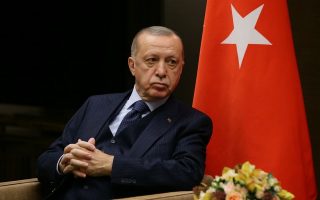Contrasting models of American intervention and their legacies

The chaotic evacuation from Kabul airport of Americans and their allies in August 2021 provided graphic proof of the defeat of the world’s only superpower at the hands of Islamic militants. After 20 years of an ambitious and costly crusade, Washington abandoned Afghanistan, a collection of backward but fiercely independent tribes, to the Taliban, the ragtag guerrillas whom in 2001 it had swept out of power in two weeks.
The hand-wringing over America’s humiliation and responsibility for the cruel fate that awaits millions of desperate Afghans has just begun. But one conclusion is incontestable: Washington’s attraction to military intervention in Third World countries, a favorite tool of the “neoconservatives” during the Cold War, has been discredited, becoming a national embarrassment and politically untenable. The Pentagon’s alternative is “over the horizon” warfare, fought with drones and other long-range weapons but no American “footprint” on the ground. But if hundreds of thousands of soldiers, diplomats, spies and contractors living among the locals for 20 years could not achieve Washington’s “mission,” remote electronic surveillance and long-range weapons are not likely to succeed. The tragic results of the mistargeted retaliation by drone for the suicide bombing at Kabul airport should be a powerful lesson on the unintended consequences of such tactics.
The temptation to intervene militarily in distant and unfamiliar countries is a new feature of American policy. The nation’s history is replete with warnings against foreign entanglements. Until the Second World War, xenophobia and isolationism remained powerful themes in America’s politics. The roots of modern-day interventionism can be traced to the beginning of the Cold War when expansionist Soviet behavior prompted American policy makers to counter with the strategy of “containment” of an ideologically defined adversary: communism.
Soft intervention and the Truman Doctrine
In March 1947, following Britain’s abrupt decision to terminate its assistance to Greece and Turkey, President Truman declared America’s decision to defend its national interests by supporting “free peoples who are resisting attempted subjugation by armed minorities or by outside pressures” so that they could “work out their own destinies in their own way.” This global strategy was to be pursued “primarily through economic and financial aid which is essential to economic stability and orderly political processes.” Military support was neither mentioned nor excluded. The strategy’s first implementation was to be in Greece, where a communist insurrection was under way; Turkey, under direct Soviet pressure over territorial issues, was also included. It was subsequently specified that containment did not apply to China, where Mao’s communists were driving Chiang’s nationalist regime out of power.
Although the president’s speech did not mention the Soviet Union, in congressional testimonies and other presentations containment’s purpose was revealed in apocalyptic language. In the words of Undersecretary of State Acheson, Moscow’s pressures on Greece, Turkey and Iran threatened that a “highly possible breakthrough might open three continents to Soviet penetration” in which Greece was the key: “Like apples in a barrel infected by one rotten one, the corruption of Greece would infect Iran and all to the East. It would also carry infection to Africa through Asia Minor and Egypt, and to Europe through Italy and France… The Soviet Union was playing one of the greatest gambles of history at minimal cost. We and we alone were in a position to break up the play.” Suddenly, intermittent communist-led guerrilla activity in Greece was given dramatic urgency and near-global significance… But if the Truman Doctrine was intended to counter Soviet expansion, its applicability to Greece was hardly self-evident.
Historically, US-Greek governmental relations had been normal but unexceptional. Washington’s diplomats saw no important national interests extending to the Balkans and President Roosevelt considered Southeastern Europe a stage for British-Soviet disputes which America should avoid. In the early 1940s, with Greece under enemy occupation, its government in exile depended for its very existence on the British who, under Prime Minister Churchill, struggled to retain Greece in Britain’s sphere by supporting anti-communists, preventing the Leftists from dominating the resistance movement, and endorsing King George II, who in 1936 had installed the Metaxas dictatorship. In September 1944, as the Germans were withdrawing from Greece, Soviet commanders in Bulgaria rebuffed requests from top Greek communists to send troops to “liberate” the country and, coincidentally, enable the KKE to seize power. In December, American officials attributed a communist-led uprising in Athens to war-related upheavals, traditional political divisions and, above all, to Britain’s highhanded support for the unpopular monarch. The State Department denounced British interference in Greece and the US Navy in Italy refused to transport Commonwealth troops to fight the insurgents. For his part, preoccupied with the still-raging war in Europe, Stalin remained a passive observer of events in Greece. To Dimitrov, his Bulgarian adviser on the Balkans, he complained that, by ignoring his advice to avoid force and expecting the Red Army to come to their assistance, the KKE had “acted foolishly.”
In 1946, the KKE’s appeals to Moscow for guidance and support for its revolutionary goals received only Delphic responses, advising patience and caution. As guerrilla attacks on government outposts escalated into civil war, there was no credible evidence that the violence was caused by Moscow’s ambitions. Armed bands crossed the porous northern borders into neighboring communist states and received refuge and assistance, including weapons and supplies. By 1948, with American military and economic support to the government side in full swing, foreign assistance to the insurgents gradually intensified and was eventually organized across Soviet-controlled Eastern Europe. It was disrupted by the Stalin-Tito break but continued even after the Yugoslavs closed their border to the insurgents whose ranks now included growing numbers of Slavo-Macedonians. Among the major items earmarked for the insurgents but never delivered were heavy artillery and aircraft.

Moscow’s role in aiding the KKE’s “Democratic Army” remained indirect and a closely guarded secret: The Greek government and its allies were unaware of it for many years. Although significant in its scope and intent, foreign assistance to the insurgents was never sufficient to match the growing superiority of the government forces in numerical strength, modern weaponry, training and combat performance. After a low start, the morale and effectiveness of the government forces rose rapidly, insuring that victory would be certain. It would also be decisive: Domestic communism no longer threatened national security.
Americans advised but did not command the Greek armed forces, and no American troops engaged in combat. The only American casualty of the civil war was an army officer who accompanied a reconnaissance plane that was shot down over insurgents’ territory; he survived the crash but was murdered by his captors. At the height of the war the dispatch of American troops to Greece was considered but, at the urging of George Kennan, architect of containment, was rejected as unnecessary and unwise.
Similarly, throughout the crisis, state institutions remained under a legitimate and democratically elected Greek government which implemented emergency legislation enacted by an elected parliament. Although the KKE was outlawed, other parties competed freely in regularly held elections. Despite the Truman Doctrine’s promise for political, economic and social reforms, the Americans’ intervention focused on national security and development programs essential for the defeat of the insurgency. Intrusive intervention and dictation, actual or perceived, soon caused widespread resentment. Disappointments over foreign policy issues such as the Cyprus problem and tensions in Greek-Turkish relations morphed into pervasive anti-Americanism. But national cohesion remained strong and was perhaps even fortified by a widely shared feeling of victimization in a grating patron-client relationship.
In the early 1950s, with the end of civil war and return to peacetime conditions, direct American assistance and interventionist measures were lifted. Over time, participation in the Marshall Plan led to steady economic development and ties with the European Community (and, eventually, to Greek membership in the European Union). Earlier, under Washington’s continued support, Greece also entered NATO, thus cementing the country’s place in the Atlantic community. However grudgingly, with the exception of the extreme Left, Greeks were satisfied with the impact of American intervention upon their country.
No less pleased were many among American foreign policy elites who saw in the Truman Doctrine a model for the projection abroad of benevolent power and competence which was well worth the effort and might be applicable elsewhere. They could not have foreseen that the model of intervention conceived in the 1940s would gradually be so misdirected and distorted as to become a prescription for failure, dangerous to America’s national interests.
Afghan intervention a costly failure
Before 2007, when “Charlie Wilson’s War” became a hit, few Americans were aware of Afghanistan, a Muslim land in Asia historically caught between the Russian and British empires. In 1934 Washington extended recognition but otherwise ignored it as an inhospitable patch in Moscow’s sphere. In 1979, when the Soviets occupied Afghanistan to bolster their unpopular puppet regime, America reacted with the Carter Doctrine, pledging to defend the oil-rich Persian Gulf from outside aggression, boycotting the Moscow Olympics, withdrawing from the SALT II arms agreement, and providing assistance to Afghanistan’s neighbor, Pakistan. Expanding the Carter Doctrine, the Reagan administration gave weapons to the Mujahadeen, the Islamic guerrilla fighters who in 1989 succeeded in forcing the Soviets to withdraw from Afghanistan. In 1992 they overthrew the pro-Soviet regime in Kabul.
Sharply divided by ethnic, religious and linguistic differences and loyal to fiercely independent warlords, Afghanistan’s Mujahadeen plunged the country into civil war from which one faction, the Taliban, emerged dominant. The Taliban’s allies included Osama bin Laden, millionaire scion of a powerful Saudi family and head of Al-Qaeda, a terrorist organization with international reach. A fiercely religious eccentric who modeled himself after the prophet Mohammed, he had funded the war on the Soviets and become a hero of the Arab world. But he reserved most of his hatred for the “morally decadent” West and its leader, America, and was determined to remove its presence in the Middle East. On September 11, 2001, 17 of his followers hijacked four American commercial planes and carried out the worst terrorist attack in American history.
American intelligence had focused on Al-Qaeda long before September 2001. Since 1992, terrorist attacks attributed to it had included the bombing of the World Trade Center (1993), the destruction of the American embassies in Kenya and Tanzania (1998), and the bombing of the warship USS Cole (2000). After the carnage and destruction of September 11, 2001, an outraged nation demanded swift retribution against the perpetrators, whose identity was not in doubt. When the Taliban government rejected Washington’s demands to extradite bin Laden and expel Al-Qaeda, American forces invaded Afghanistan in October 2001 and President George W. Bush declared “war on terrorism.” The immediate mission was to capture bin Laden and deliver him to justice, and secure Afghanistan from ever again serving as the base for terrorist attacks on America.
At first the mission appeared easy. In two weeks the Taliban army was defeated and dispersed, blending into the civilian population or fleeing into neighboring Pakistan. But when America went to war in Iraq in March 2003, the Taliban regrouped, cast themselves as nationalists and began an insurgency against the American “occupation.” Having avoided capture by escaping into Pakistan, bin Laden remained in hiding near a large Pakistani military installation, from which, surrounded by wives and children, he continued to direct Al-Qaeda. Finally he was tracked down and, to the surprise and chagrin of Pakistani authorities, was killed on May 2, 2011, in a daring SEAL commando raid.
Even before bin Laden’s death, the emboldened Taliban insurgency compelled Washington to energize its vague “war on terrorism” whose principal target had been, and remained, the overthrow of Saddam Hussein’s Iraqi regime. Although defeated in the Gulf War of 1990-91 and expelled from Kuwait, under Saddam Iraq remained defiant and an obstacle to ambitious American policies in the Middle East. As for Afghanistan, the mission was to make it a unified, pacified and self-governing democracy which, with generous Western assistance, could remain free of Islamist extremists and terrorist groups that might attack America and its allies. Despite corrupt practices and monumental misuse and pilfering of funds, some real progress was achieved, particularly in education, women’s roles, individual rights and freedoms, and social justice. But the pace was painfully slow and the performance of key institutions of government, including the new Afghan armed forces, was incompetent, corrupt and abusive. To many Afghans, the American-sponsored authorities were worse than the Taliban.
What doomed America’s intervention in Pakistan was the invasion of Iraq, in March 2003. Justified by false charges that Iraq possessed weapons of mass destruction, the second invasion of Iraq was to prove a colossal military blunder. Saddam Hussein was quickly overthrown and American troops established control of the country, while military and civilian advisers assumed administrative authority and Western-oriented Iraqis received key government posts. At the same time, thousands of professionals in the military and state bureaucracy of Saddam’s regime were fired and banned from public service. Not surprisingly, most of the forcibly discharged and now jobless soon emerged as a highly motivated and popular insurgent force that would fight and bleed the Americans and their allies for years. The principal consequence of the Iraq war was that it deprived the mission in Afghanistan of the energy, resources and official focus needed to sustain it.

In Washington, succeeding administrations now debated when and how quickly to withdraw from Afghanistan. Finally, on February 29, 2020, during the national election campaign, the Doha (Qatar) agreement with the Taliban leaders – whom President Trump had hoped to host at Camp David – from which he excluded the Kabul government, ended the war in Afghanistan and American intervention. Under its terms, Taliban attacks on the Americans and their allies were to stop and foreign troops withdrawn by May 1, 2021; afterward the Taliban would have unconditional authority over the country, while 5,000 prisoners (mostly Taliban and Islamic State veteran fighters) were to be freed immediately. In reaction, Afghanistan’s president fled abroad with millions of state funds while army commands stopped fighting and sought to engage the Taliban in peace talks.
In Washington, the incoming president, Joe Biden, who had for years supported America’s withdrawal from Afghanistan and whose assumption of office was systematically obstructed by Trump officials until Inauguration Day, chose to implement the agreement and only extended the withdrawal deadline to August 31. Without adequate preparations for the orderly evacuation of civilians, especially the thousands of Afghans who had served the Americans for years and were now desperate to escape with their families the brutality of the triumphant Taliban, the evacuation became the chaotic spectacle at Kabul airport the world watched for days in horrified fascination.
With the end of the American intervention in Afghanistan barely over, its legacy may be impossible to foresee. Yet certain prognostications may already be justified.
The Taliban’s control of the country is complete and its military arm has inherited large stores of American weapons and equipment. Yet it remains to be seen whether it can establish and sustain a functioning civilian government over a large country and a resentful population with no national cohesion.
Diplomatic recognition by the international community, essential for vital political, legal, financial and commercial transactions, may be difficult to secure.
Without natural resources or industrial base and heavily dependent on international financing and humanitarian assistance, which may now be unavailable, Afghanistan under a Taliban regime faces economic collapse and famine.
With the Taliban’s stated intention to impose Islamic law and traditions, recently gained social and personal freedoms may be lost. Already, the replacement of the ministry of women’s affairs with one to enforce moral values and the banning of girls’ education beyond primary school give clues on what is to come.
The Taliban government’s ability to control or expel terrorist organizations such as Al-Qaeda and the Islamic State (ISIS) is highly doubtful.
American intervention as applied in Afghanistan (and Iraq) was a costly failure whose damage to America’s reputation and standing in the world is bound to be felt for many years. Moreover, the assault on January 6, 2021, on the Capitol, symbol of American democracy, by a wild assortment of enraged extremists, confirms official statements that the principal threat to the country’s security no longer comes from distant lands but from homegrown enemies. The principal target of the new war on terror is now domestic.
John O. Iatrides is a professor of international politics at Southern Connecticut State University. He served with the Greek National Defense General Staff during 1955-56 and with the Office of the Prime Minister of Greece from 1956 to 1958.





